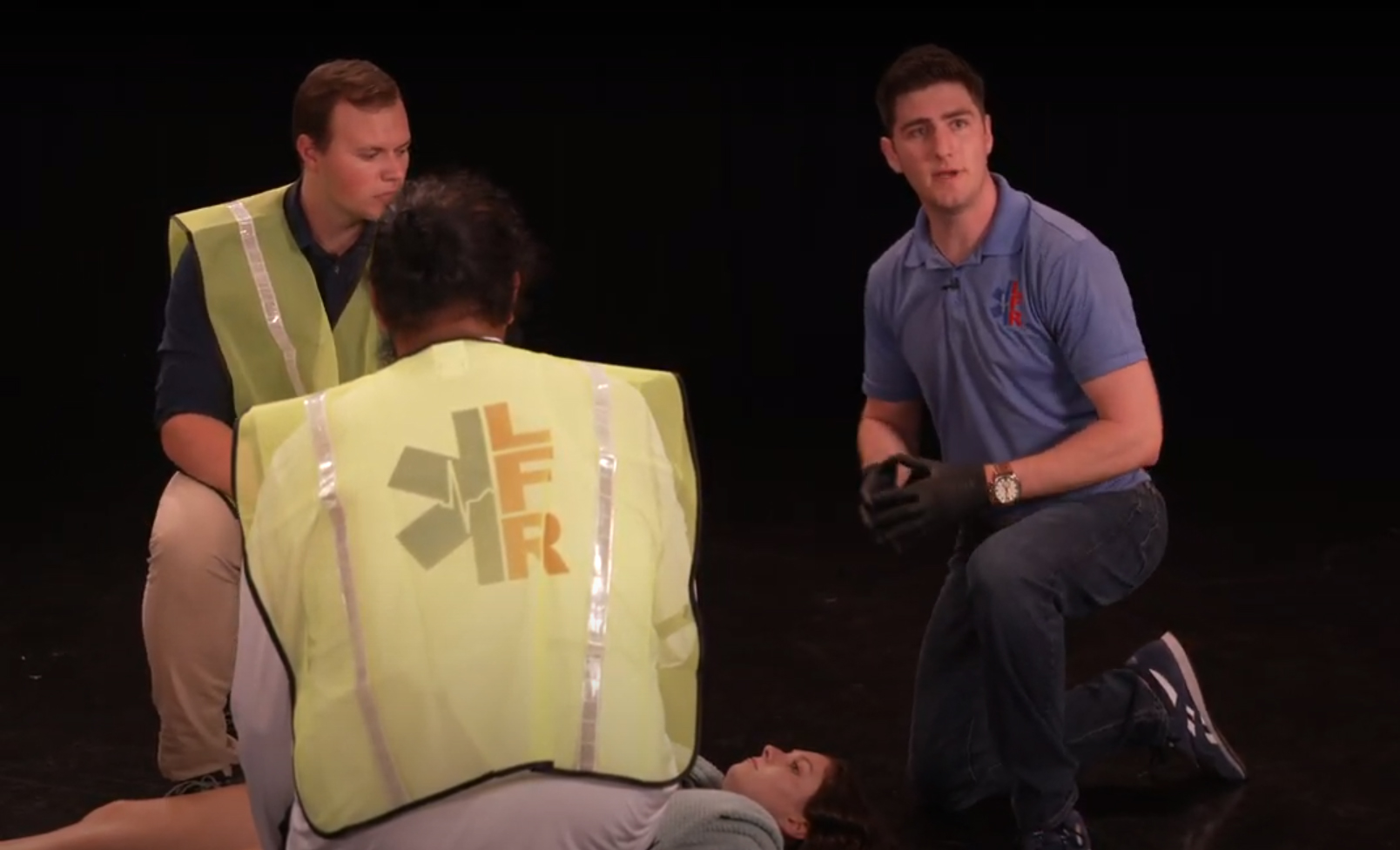
Since launching LFR International several years ago, UMMS M3 Zach Eisner and former student Peter Delaney have trained thousands of citizen first responders in Sierra Leone, Nigeria, and other countries with limited emergency medical response services. LFR stands for Lay First Responders.
Until COVID and its myriad travel restrictions, all training had been conducted in person, but the pandemic presented a need for remote options. A new article published this month in Injury highlights the success of LFR’s resulting hybrid curriculum.
“Our partners had shown an interest using a hybrid curriculum if we could demonstrate that it can be as effective as our in-person training, so this study was about exploring that question,” said Eisner. “So far, we’re finding that online instruction is not inferior, which has massive implications for the way we roll out training in the future.”
A grant from the U-M Duderstadt Center helped produce the video materials at the center of the new hybrid first-responder course, and the Center for Global Surgery supported the research to gauge its effectiveness.
Using videoconferencing and a series of training modules developed in Ann Arbor, the LFR team trained 30 trainers – mostly nurses, doctors and police officers – in Lagos, Nigeria in late 2021. The following year, those trainers in turn delivered the curriculum to 350 citizens; LFR targets its efforts on the demographic most likely to be nearby when traffic accidents happen: motorcycle taxi drivers.

The training videos, produced at the Duderstadt Center by University students studying media and film, cover topics like triage and scene safety, keeping an airway unobstructed, and bleeding management—all essential skills at an accident scene. Onsite, these are supplemented by in-person, hands-on breakout sessions to practice each skill under remote instructor supervision. Pre- and post-training assessments, including a six-month follow-up demonstrated, the hybrid format is indeed effective.
Organization leaders are now engaged in larger-scale randomized control trails in both Nigeria and Sierra Leone to validate the results, and Eisner recently presented on this work during the annual Academic Surgical Congress meeting in Washington, D.C. To date, LFR has trained 7,000-plus transportation providers as lay first responders and 400 trainers, leading to an estimated 15,000 interventions.
“I’m so grateful for everything the University has done to support this work,” Eisner said. “It was students who operated the cameras, did all of the staging, controlled the light and the sound. They helped us create the videos that are the foundation of this curriculum. I’m very proud of that.”
